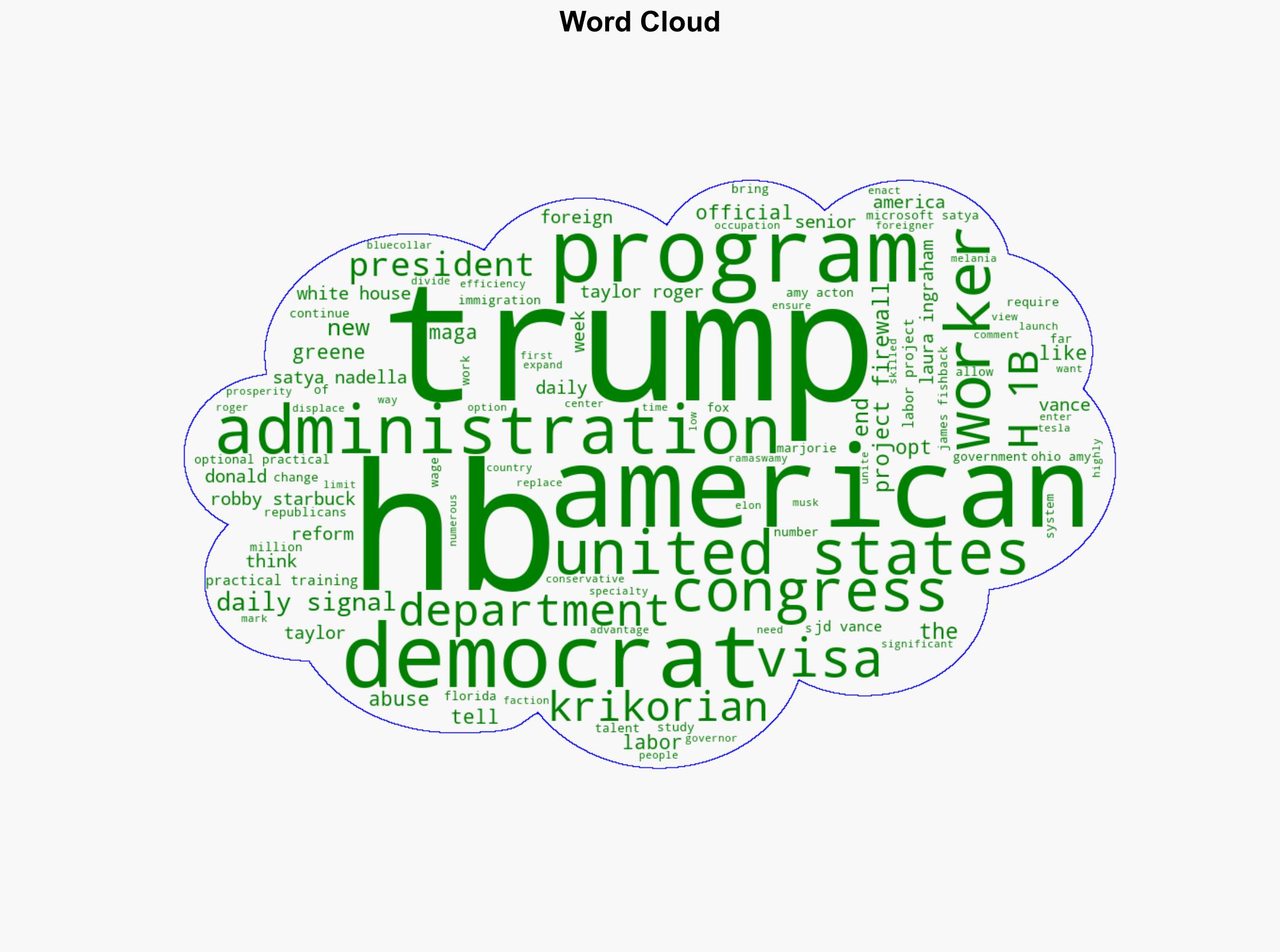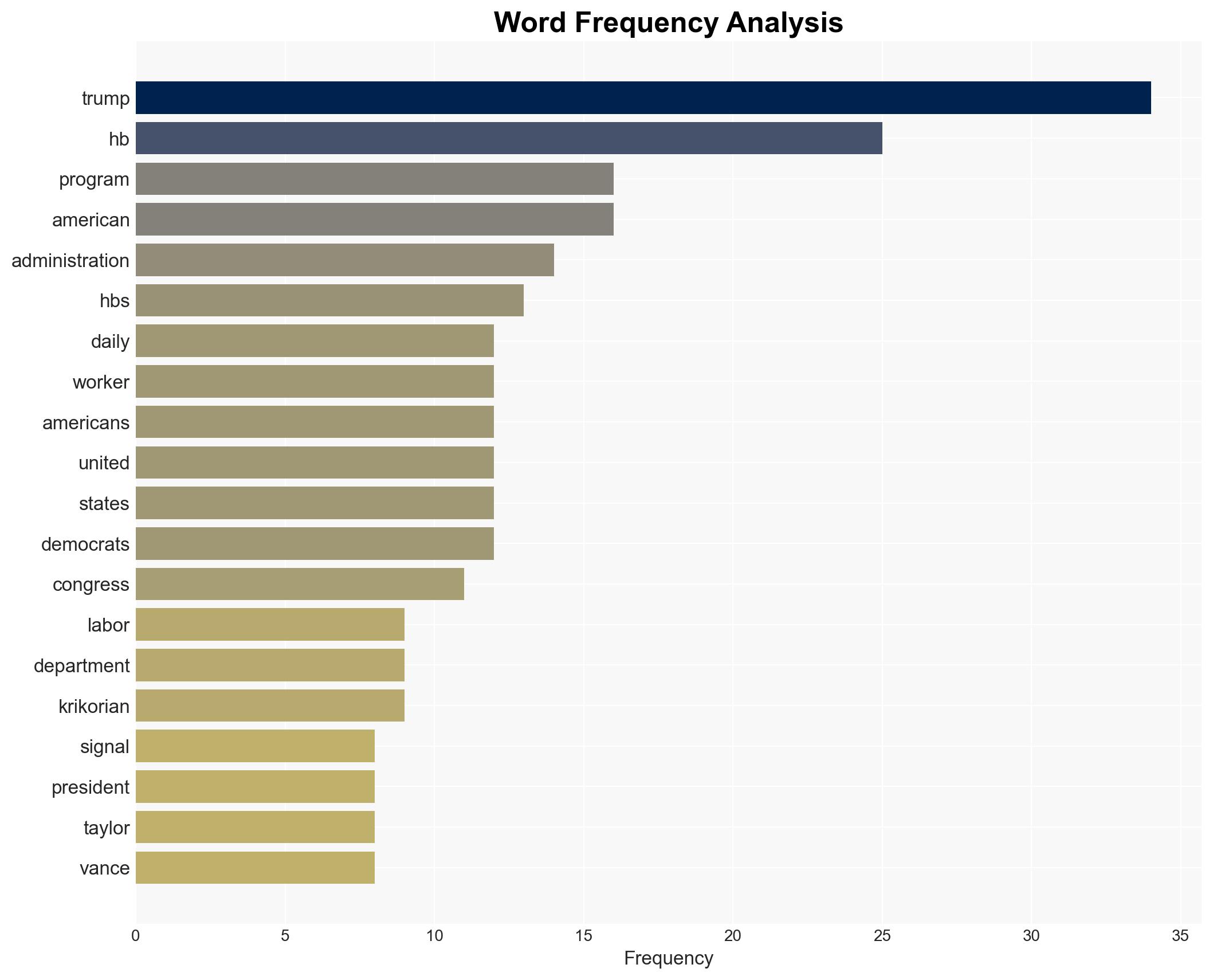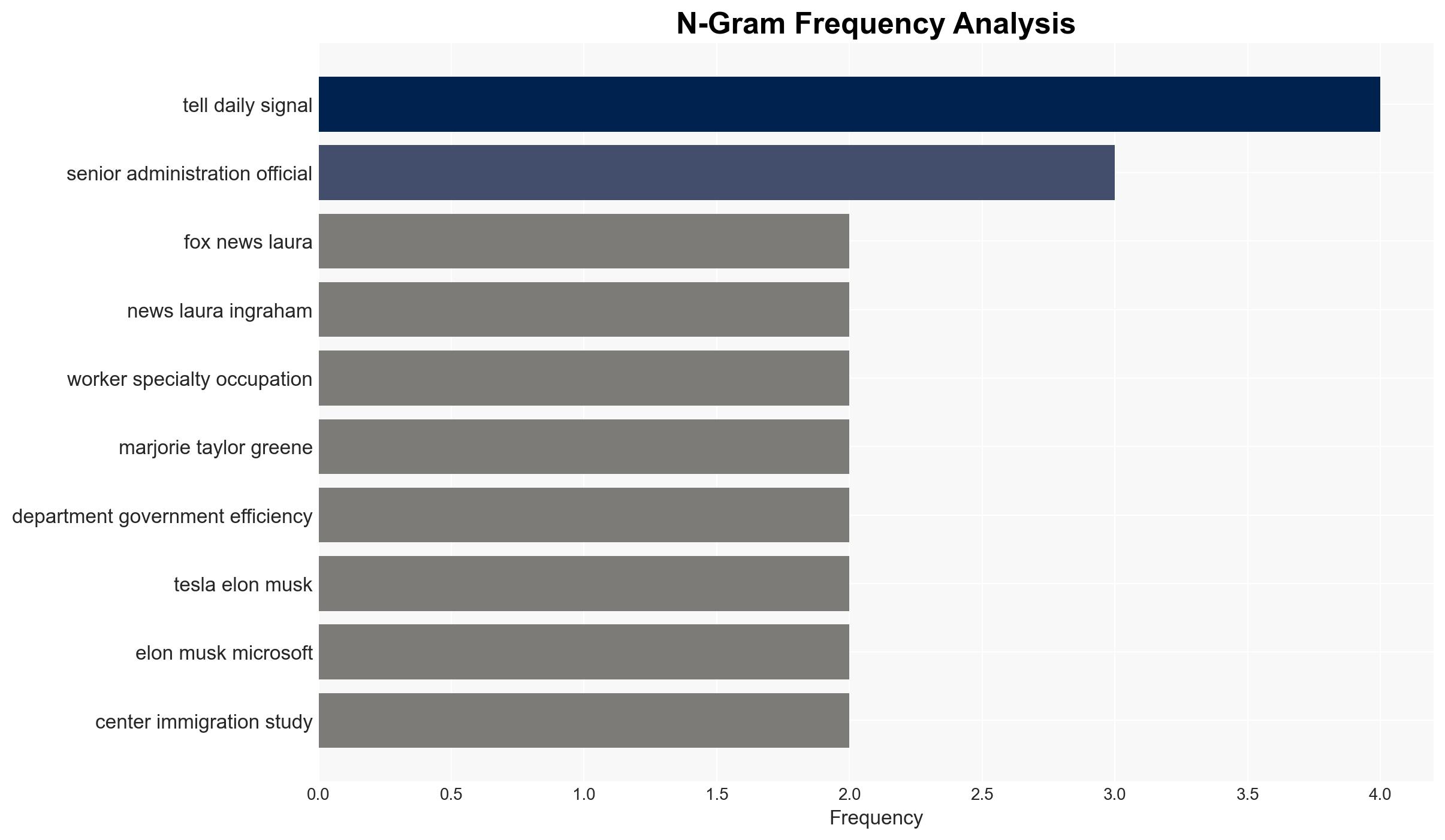SCOOP Trump Administration Divided Over How to Best Constrain H-1B Program – Daily Signal
Published on: 2025-11-19
AI-powered OSINT brief from verified open sources. Automated NLP signal extraction with human verification. See our Methodology and Why WorldWideWatchers.
Intelligence Report:
1. BLUF (Bottom Line Up Front)
The Trump administration is divided on reforming the H-1B visa program, with factions advocating for both restriction and strategic expansion. The most supported hypothesis is that the administration will implement moderate reforms to address abuse while maintaining the program’s core, balancing internal and external pressures. Confidence Level: Moderate. Recommended action is to monitor policy shifts and prepare for potential changes in visa processing and labor market impacts.
2. Competing Hypotheses
Hypothesis 1: The administration will significantly restrict the H-1B program to protect American jobs, aligning with the MAGA base’s preferences.
Hypothesis 2: The administration will pursue moderate reforms, addressing abuses while maintaining the program to satisfy business interests and avoid economic disruption.
Hypothesis 2 is more likely due to the need to balance competing interests within the administration and the economic reliance on skilled foreign labor in critical sectors.
3. Key Assumptions and Red Flags
Assumptions: The administration seeks to protect American jobs without severely disrupting business operations reliant on skilled foreign workers.
Red Flags: Potential for internal deception or misinformation from factions within the administration, as well as external pressure from influential tech leaders and political figures.
4. Implications and Strategic Risks
Political risks include internal discord within the administration and backlash from both conservative and business communities. Economic risks involve potential labor shortages in tech and other industries reliant on H-1B visas. Informational risks include misinformation campaigns that could skew public perception and policy decisions.
5. Recommendations and Outlook
- Monitor legislative and executive actions closely to anticipate changes in visa policy.
- Engage with key stakeholders, including business leaders and policymakers, to advocate for balanced reforms.
- Best-case scenario: Reforms enhance program integrity without harming economic interests.
- Worst-case scenario: Drastic restrictions lead to economic disruption and international talent loss.
- Most-likely scenario: Moderate reforms that address abuse while preserving essential program functions.
6. Key Individuals and Entities
Donald Trump, Marjorie Taylor Greene, Robby Starbuck, Elon Musk, Satya Nadella, James Fishback, Mark Krikorian, Amy Acton, Vivek Ramaswamy, Taylor Roger
7. Thematic Tags
Cybersecurity, Immigration Policy, Economic Impact, Political Strategy, Labor Market
Structured Analytic Techniques Applied
- Adversarial Threat Simulation: Model and simulate actions of cyber adversaries to anticipate vulnerabilities and improve resilience.
- Indicators Development: Detect and monitor behavioral or technical anomalies across systems for early threat detection.
- Bayesian Scenario Modeling: Quantify uncertainty and predict cyberattack pathways using probabilistic inference.
- Narrative Pattern Analysis: Deconstruct and track propaganda or influence narratives.
Explore more:
Cybersecurity Briefs ·
Daily Summary ·
Support us





